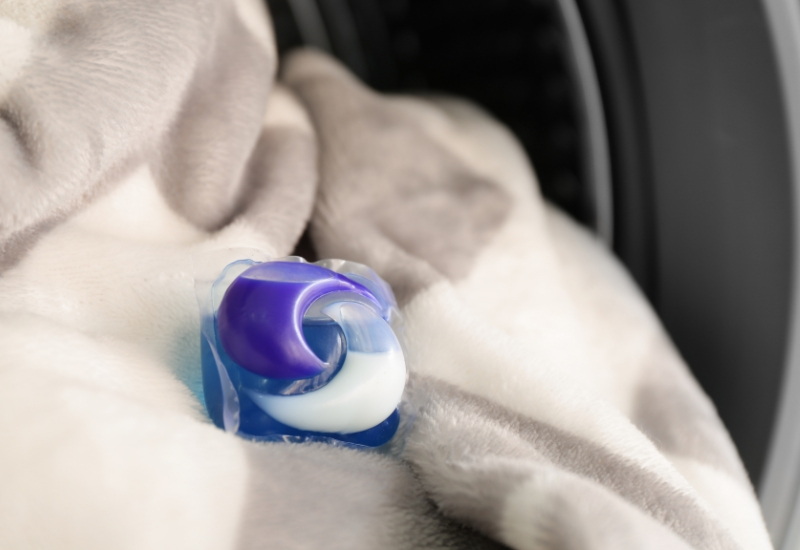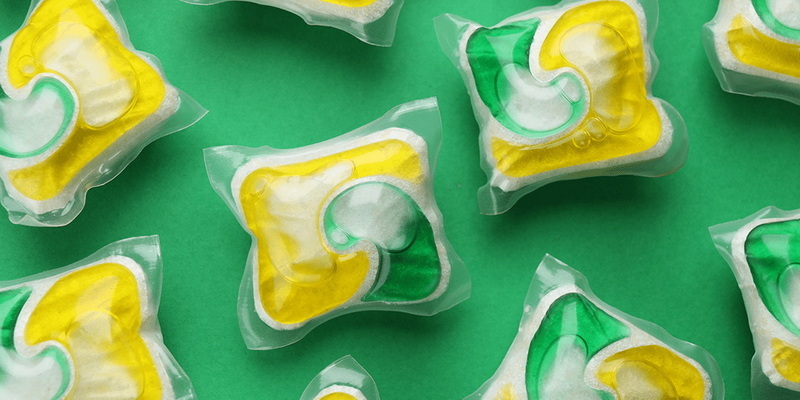Dongguan UFine Daily Chemical Co.,Ltd.
- All
- Product Name
- Product Keyword
- Product Model
- Product Summary
- Product Description
- Multi Field Search
Views: 222 Author: Tomorrow Publish Time: 10-31-2025 Origin: Site











Content Menu
● Materials and safety considerations
● Troubleshooting common issues
● Variations and customization
● Environmental and ethical considerations
● FAQ
>> 1. How long do homemade laundry pods last?
>> 2. Can I customize the scent of my pods?
>> 3. What should I do if pods are not dissolving properly?
>> 4. Are homemade pods safe for all fabrics?
>> 5. Can I make hypoallergenic laundry pods at home?
Making your own laundry detergent pods at home can be a rewarding DIY project that helps you save money and customize cleaning power. This article provides a thorough, safe, and practical guide to creating laundry soap pods from common household ingredients. It covers the science behind soap pods, necessary safety precautions, step-by-step instructions, troubleshooting tips, and ways to store and reuse materials. By the end, you will understand how to craft effective, convenient laundry pods that fit your washing needs.

Laundry pods offer a convenient, pre-measured dose of detergent that simplifies the washing process. Homemade pods can be tailored to different water temperatures, fabric types, and stain removal needs. To ensure safety and effectiveness, it is essential to balance cleaning agents, binders, and moisture control, while following proper safety practices.
- Soap base: A combination of washing soda (sodium carbonate), borax (sodium borate), and a mild liquid detergent or castile soap can be used. Some recipes substitute baking soda for a portion of washing soda.
- Water: Used to dissolve and activate the mixture.
- Binders and molds: Food-grade cornstarch or gelatin can help bind the pods; silicone ice cube trays or silicone molds are convenient for shaping.
- Oils and additives (optional): Essential oils for fragrance, colorants (optional), and enzymes for stain fighting can be included, but should be used sparingly.
- Safety gear: Wear gloves and eye protection when handling cleaning agents to prevent skin or eye irritation. Work in a well-ventilated area.
- Storage: Store pods in an airtight container away from children and pets. Do not leave loose detergent powder where it could be ingested.
1. Prepare the dry base
- In a large bowl, combine washing soda and borax in a 2:1 ratio. For example, two cups of washing soda to one cup of borax.
- Add a mild liquid detergent or shredded soap bar to create a slightly damp, cohesive mix.
- Optional: Add a small amount of grated soap bar to boost cleaning power and scent.
2. Add and mix
- Gradually add water or liquid detergent to moisten the mixture until it holds together without dripping. Do not saturate; too much moisture causes pods to fail to dry properly.
- Stir thoroughly to distribute cleaning agents evenly.
- If you see clumps, break them apart with a spoon and continue mixing to achieve a uniform consistency.
3. Bind the mixture
- Mix in a small amount of cornstarch or gelatin to improve binding. The goal is a dough-like consistency that can be shaped into pods.
- You can also use a commercial binder designed for DIY detergent pods, following the product's instructions for quantities.
4. Shape the pods
- Scoop portions and compress them into silicone molds or onto a tray lined with parchment paper. Ensure each pod has uniform size for consistent washing.
- For a molded look, fill each cavity to about three-quarters full, then press gently to ensure compactness.
5. Dry and cure
- Allow the pods to dry completely in a cool, dry area for 24 to 48 hours. They should be hard and not yield to pressure.
- If moisture persists, place the tray in a low-humidity area or use a fan to aid drying.
- After initial drying, you can lightly dust the pods with a touch of cornstarch to reduce sticking during unmolding.
6. Unmold and store
- Once fully dry, remove pods from molds. Store them in an airtight container, away from moisture and heat.
- Label containers with the production date and batch number if you are making multiple formulations.

- Test a single pod with a small load of laundry before scaling up. Ensure the pod dissolves completely in the wash.
- Avoid using high concentrations of borax or other additives if you have sensitive skin or allergies.
- Keep pods away from children; store with childproof lids and clearly labeled containers.
- Do not place pods in the washing machine drum without water; always use in an appropriate load with sufficient water.
- Pods cracking or breaking during storage: Increase the drying time or add a touch more binding agent to improve cohesion.
- Pods not dissolving in wash: Check moisture control during production; reduce moisture or increase the portion of cornstarch binder to improve dissolution.
- Detergent residue on clothes: Reduce the amount of detergent in each pod or adjust the binding ratio to prevent over-wetting.
- Pods deforming in storage: Ensure even drying and avoid high humidity environments; consider a second drying pass or a gentler binder ratio.
- Unpleasant odor or residue: Ensure the ingredients are fresh and properly mixed; avoid overusing fragrance additives that can leave residues on fabrics.
- Powder-free pods: Use a higher proportion of liquid detergent to create a cohesive dough that forms shells instead of powdery units.
- Scent and whitening: Add a small amount of essential oil (such as lemon or lavender) for fragrance and optional optical brighteners or enzymes designed for laundry if desired and compatible with your washer.
- Hypoallergenic options: Use mild, fragrance-free soaps and minimize additives to reduce the risk of skin irritation.
- Color-free pods: Omit colorants to reduce potential staining risks on delicate fabrics.
- Pods typically retain effectiveness for several months when stored in a cool, dry place. Exposure to moisture can cause pods to swell or dissolve prematurely.
- Label containers with production date to track freshness and effectiveness.
- If you notice powdery residue around the container, it may indicate minor leakage; inspect seals and consider switching to a more airtight container.
- Using homemade pods can reduce plastic packaging when you repurpose glass or reusable containers for storage.
- Opt for non-toxic ingredients and avoid phosphates where possible to minimize environmental impact.
- Consider buying store-bought components in bulk with recyclable packaging to further reduce waste if you prefer not to DIY entirely.
- Borax has been a topic of safety discussions; use it in moderation and according to guidelines. If you have sensitive skin, consider replacing borax with alternative binding agents like sodium citrate or additional cornstarch.
- Keep all cleaning products out of reach of children and pets. Use clearly labeled containers and consider child-resistant lids.
Homemade laundry soap pods offer a practical, customizable cleaning option for households focused on cost savings and sustainability. By carefully balancing moisture, binders, and detergents, you can produce effective, easy-to-use pods that dissolve well in the wash and reduce packaging waste. Always prioritize safety during preparation and storage, and test a pod before full-scale use to ensure compatibility with your laundry routine.

Answer: When stored in a cool, dry place in an airtight container, they can maintain effectiveness for several months.
Answer: Yes, you can add a small amount of fragrance or essential oil, but use sparingly to avoid affecting washing performance.
Answer: Check moisture levels during mixing, ensure pods are fully dried, and consider increasing the binding agent slightly.
Answer: Most standard fabrics are compatible, but test on delicate or specialty fabrics and adjust product formulation if needed.
Answer: Yes, use fragrance-free detergents and minimize additives to reduce the risk of irritation.